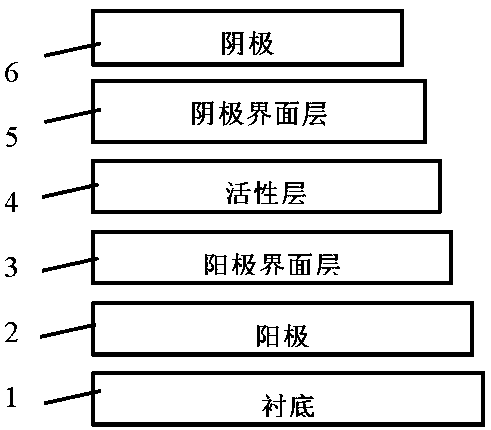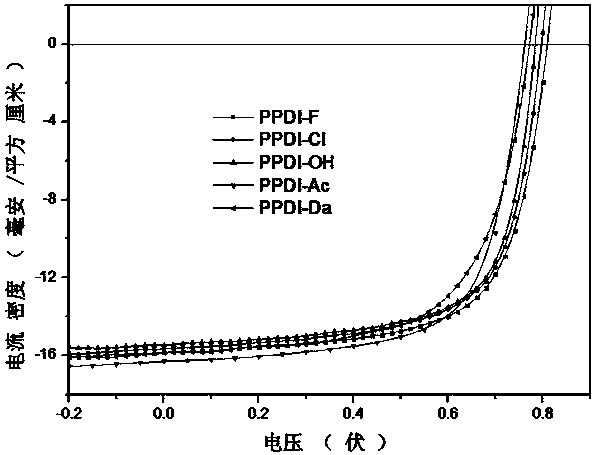Conjugated-nonconjugated n-type polyelectrolytes and their applications in organic optoelectronic devices
A polyelectrolyte and non-conjugated technology, which is applied in the field of conjugated-non-conjugated N-type polyelectrolyte and its application in organic photoelectric devices, can solve the problems of high energy consumption, large-scale application limitations, and high price. Achieve the effect of improving energy conversion efficiency, excellent charge extraction performance, and high conductivity
- Summary
- Abstract
- Description
- Claims
- Application Information
AI Technical Summary
Problems solved by technology
Method used
Image
Examples
Embodiment 1
[0031] The synthetic routes of representative conjugated-nonconjugated N-type polyelectrolytes are as follows:
[0032]
[0033] (1) Monomer PDI-N was synthesized according to the method disclosed in the literature [Energy Environ.Sci., 2014, 7, 1966].
[0034] (2) Synthesis of polyelectrolyte PPDI-Br: 1.4g of monomer PDI-N and 504mg of monomer 1,3-dibromopropane were added to a 15mL pressure-resistant bottle, nitrogen gas was introduced to exhaust, 20mL of DMF was added, and at 100 After reacting for 2 hours at Celsius, 20 mL of deionized water was added, and after continuing the reaction for 48 hours, it was precipitated with tetrahydrofuran and dried in vacuum to obtain 1.7 g of PPDI-Br.
[0035] (3) Synthesis of polyelectrolyte PPDI-F, PPDI-Cl, PPDI-I, PPDI-Ac, PPDI-OH and PPDI-Da: first use NaF, NaCl, NaI, CH 3 COONa, NaOH and C 7 h 15 The aqueous solution of COONa soaked the anion exchange resins for 6 hours respectively, and then washed the anion exchange resins t...
Embodiment 2
[0038] Using the conjugated-non-conjugated N-type polyelectrolyte PPDI-F synthesized in Example 1, PPDI-Cl, PPDI-Br, PPDI-I, PPDI-Ac, PPDI-OH and PPDI-Da as the cathode interface modifier in Applications in organic solar cells. The structure of organic solar cells is as figure 2 As shown, the sequence is: substrate 1 / ITO anode 2 / anode interface layer 3 / light absorbing layer 4 / cathode interface layer 5 / cathode 6. The conjugated-nonconjugated N-type polyelectrolyte of the present invention is used as the cathode interface layer 5 in organic solar cells.
[0039] Pre-cut the ITO conductive glass with a square resistance of 20 ohms / cm2 into 15mm×15mm square pieces. Use acetone, special detergent for micron-sized semiconductors, deionized water, and isopropanol to clean ultrasonically in sequence, blow nitrogen whistle, and place in a constant temperature oven for later use. Spin-coat a layer of 40nm thick PEDOT:PSS on ITO, and then spin-coat the active layer material PTB-Th / PC...
PUM
 Login to View More
Login to View More Abstract
Description
Claims
Application Information
 Login to View More
Login to View More - R&D
- Intellectual Property
- Life Sciences
- Materials
- Tech Scout
- Unparalleled Data Quality
- Higher Quality Content
- 60% Fewer Hallucinations
Browse by: Latest US Patents, China's latest patents, Technical Efficacy Thesaurus, Application Domain, Technology Topic, Popular Technical Reports.
© 2025 PatSnap. All rights reserved.Legal|Privacy policy|Modern Slavery Act Transparency Statement|Sitemap|About US| Contact US: help@patsnap.com



